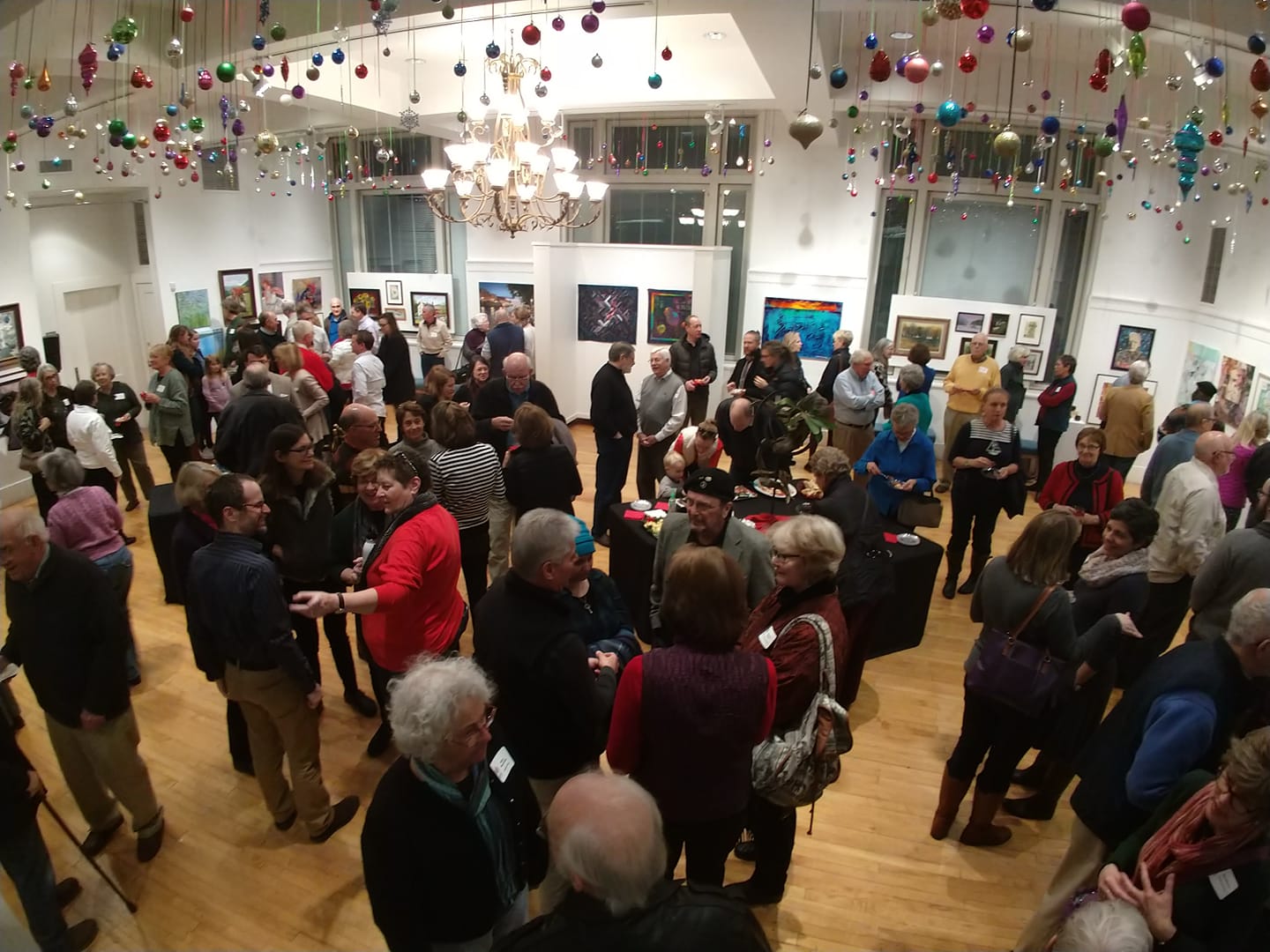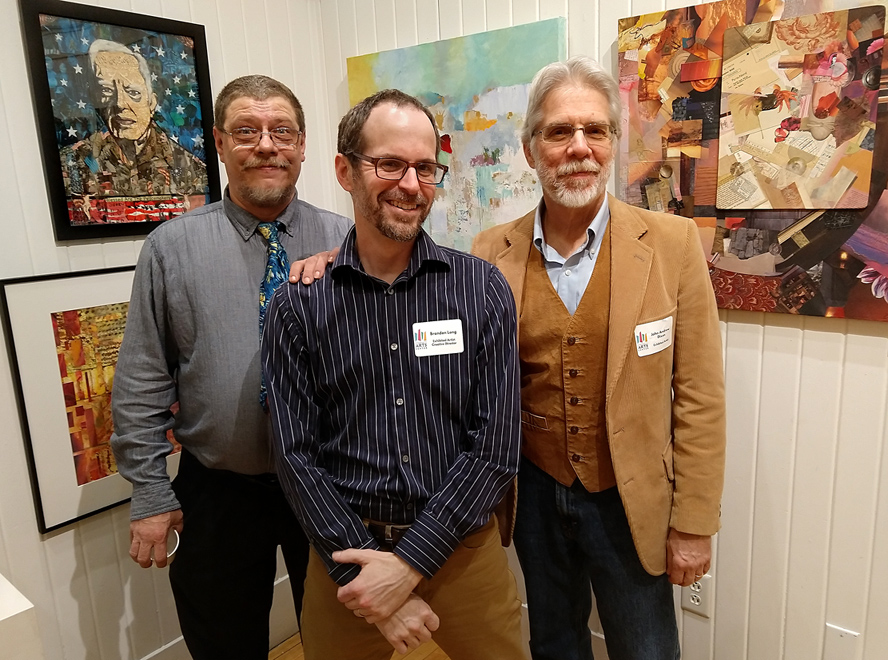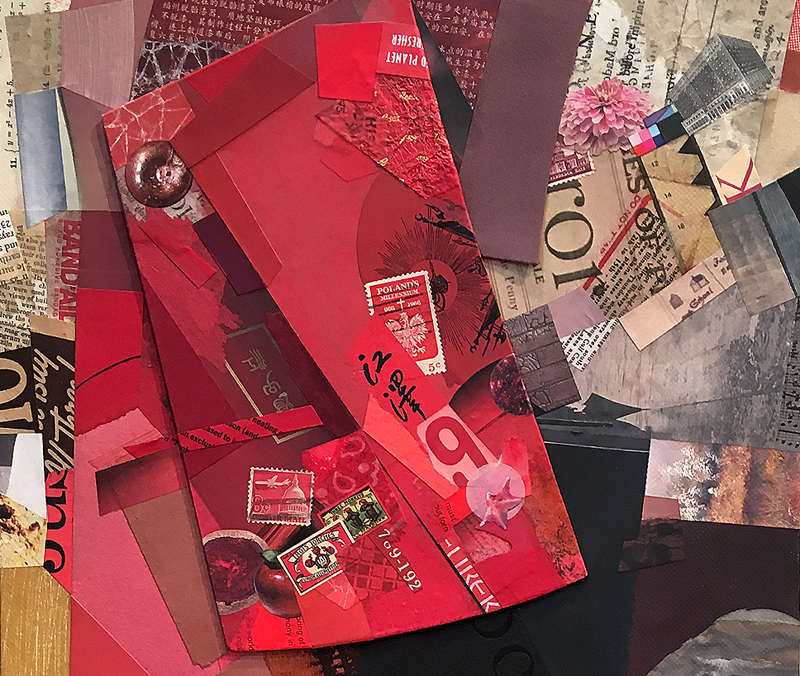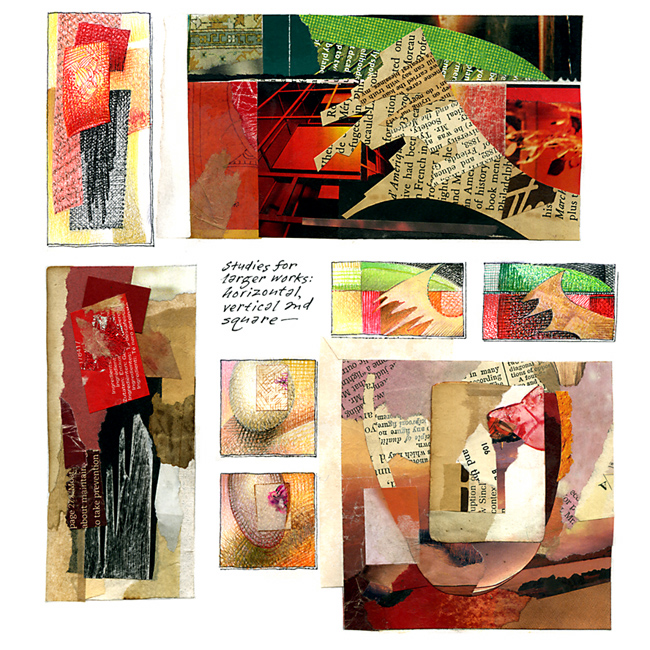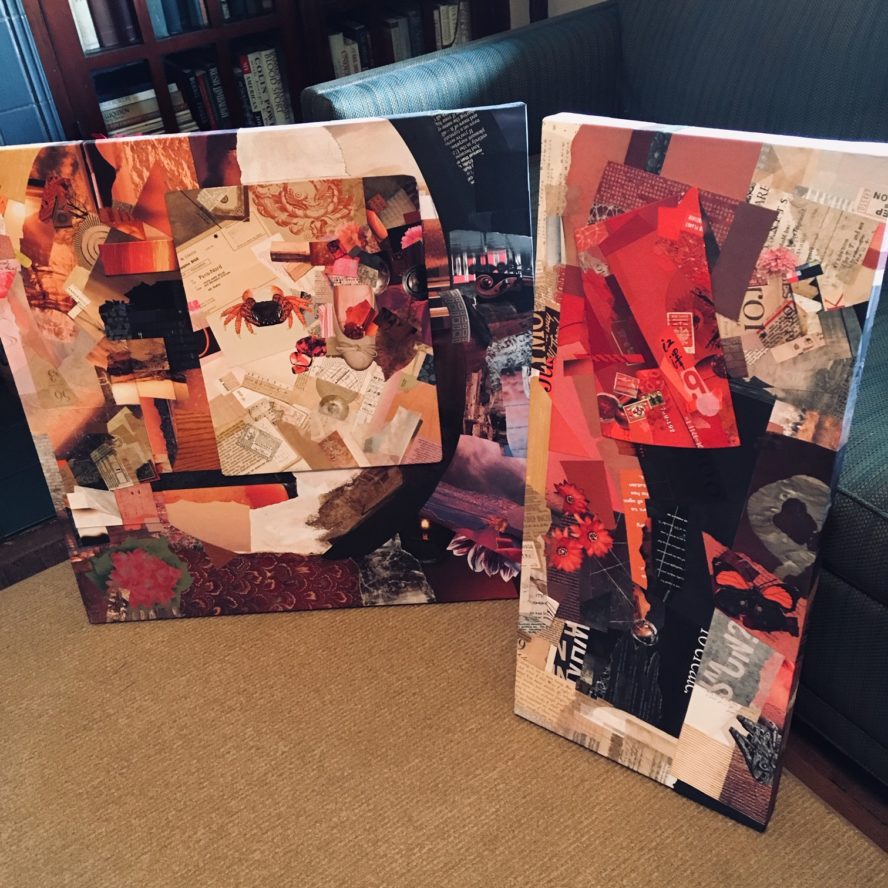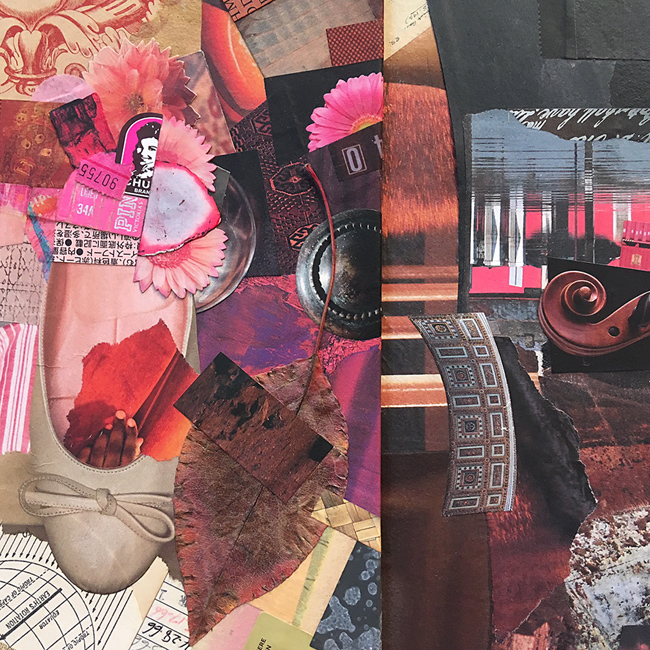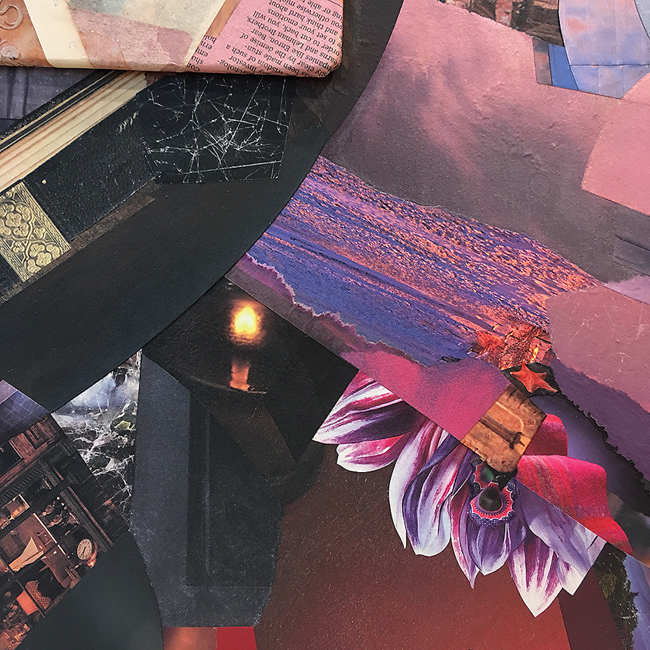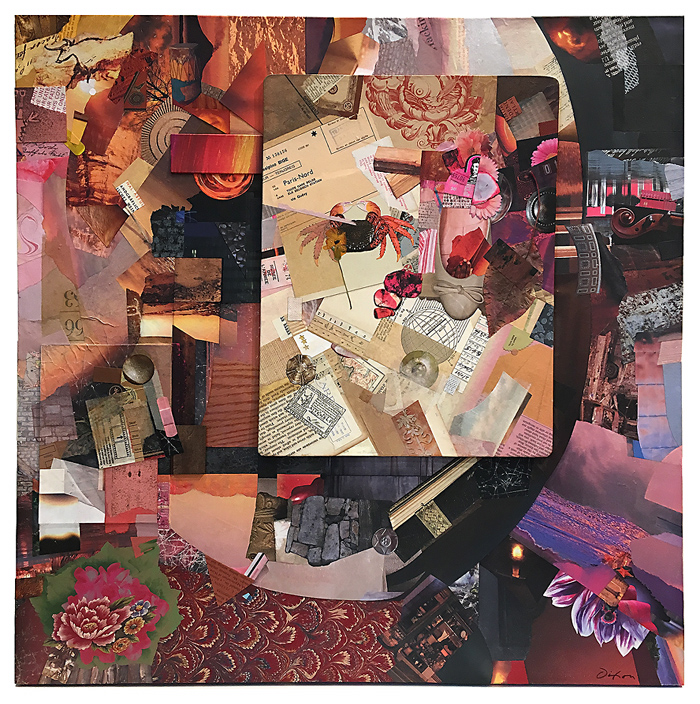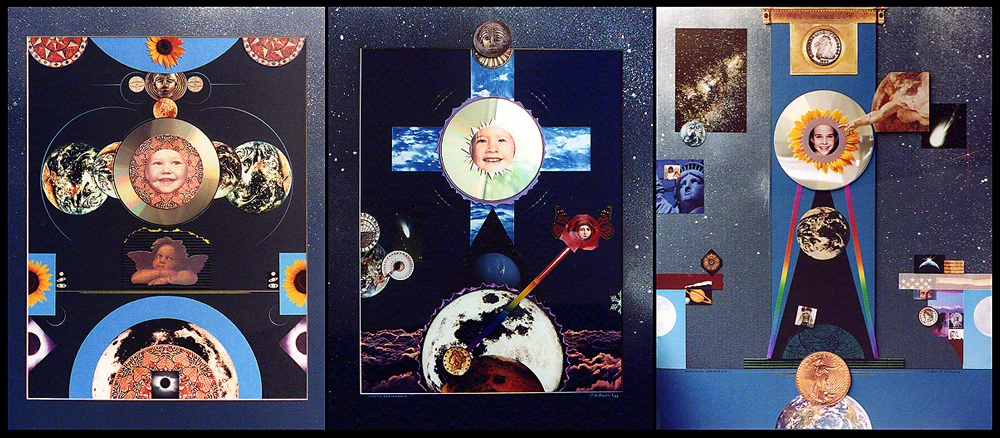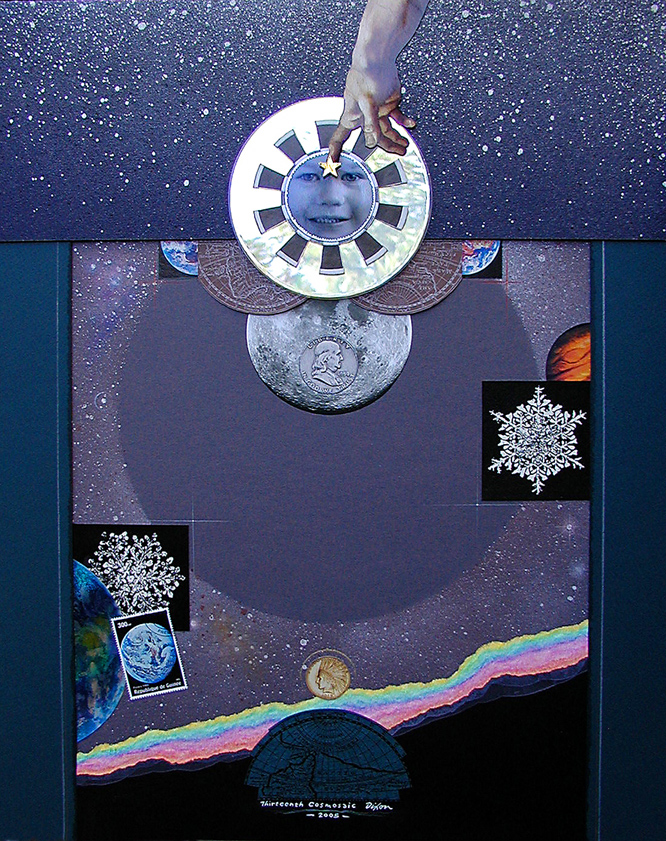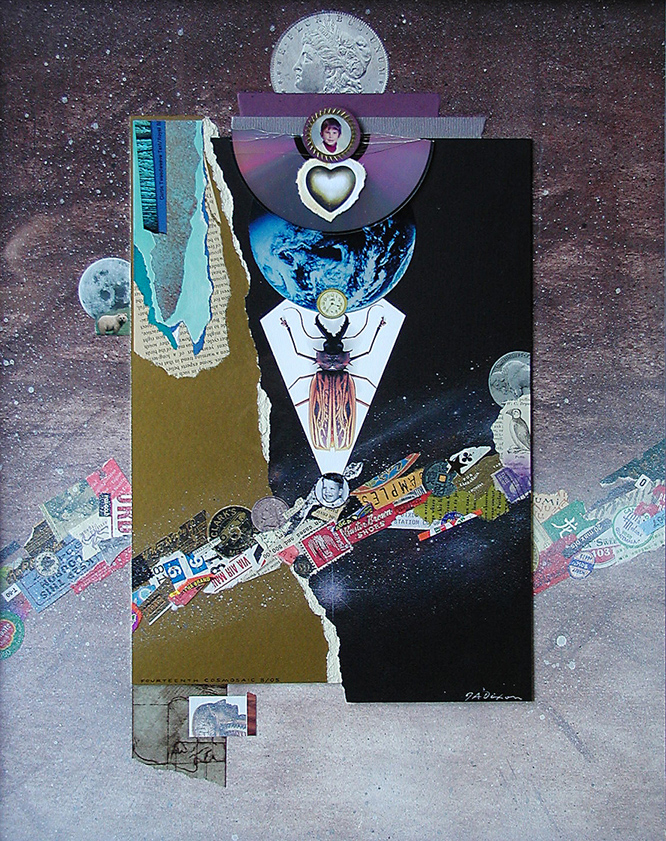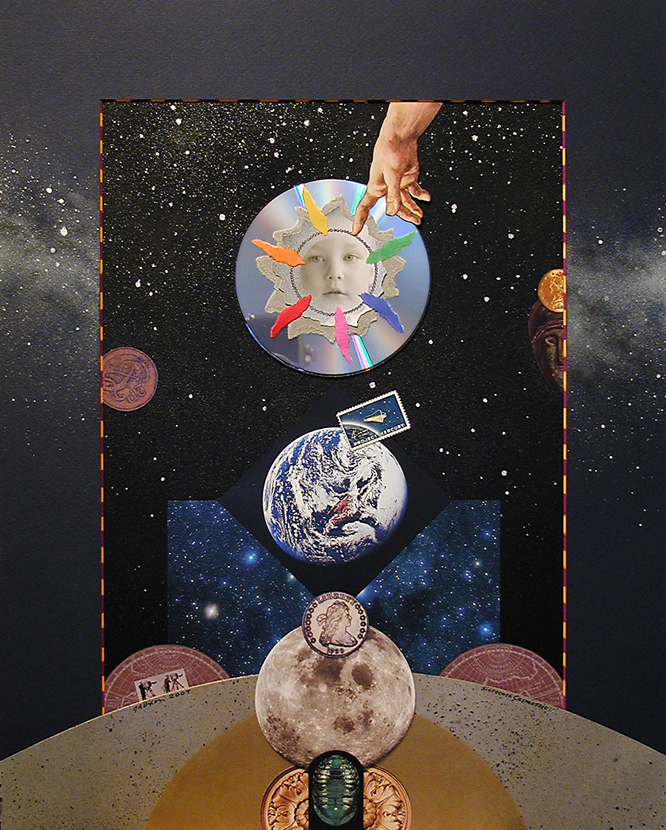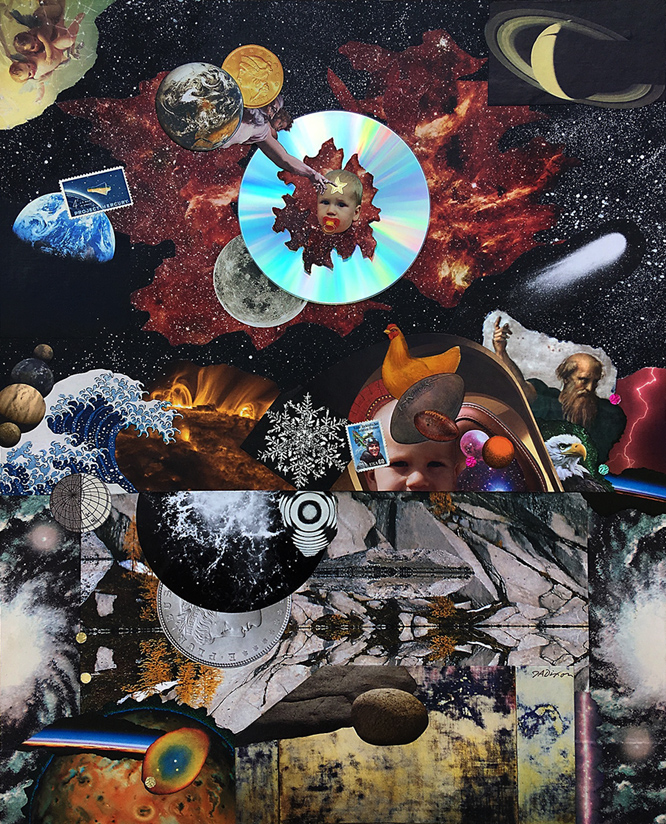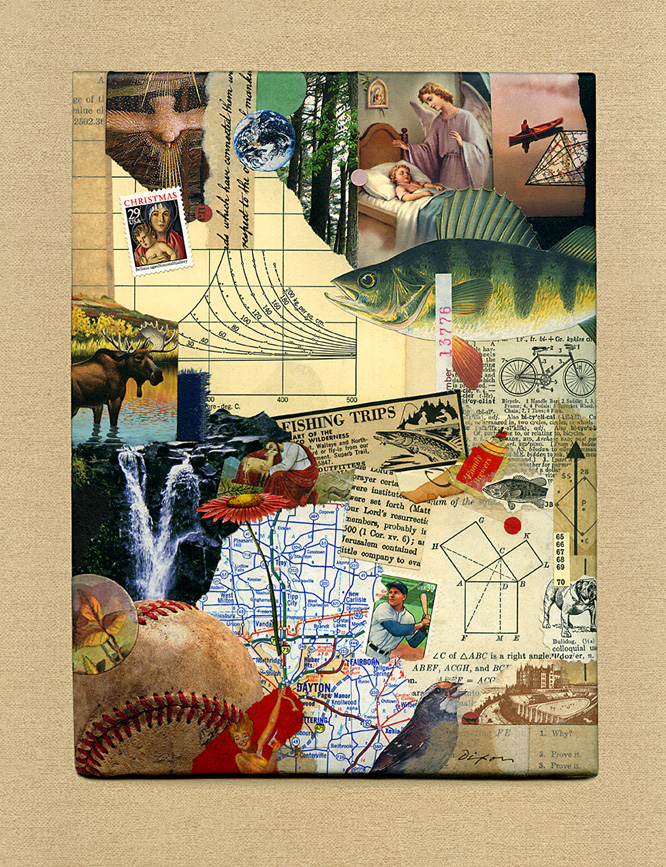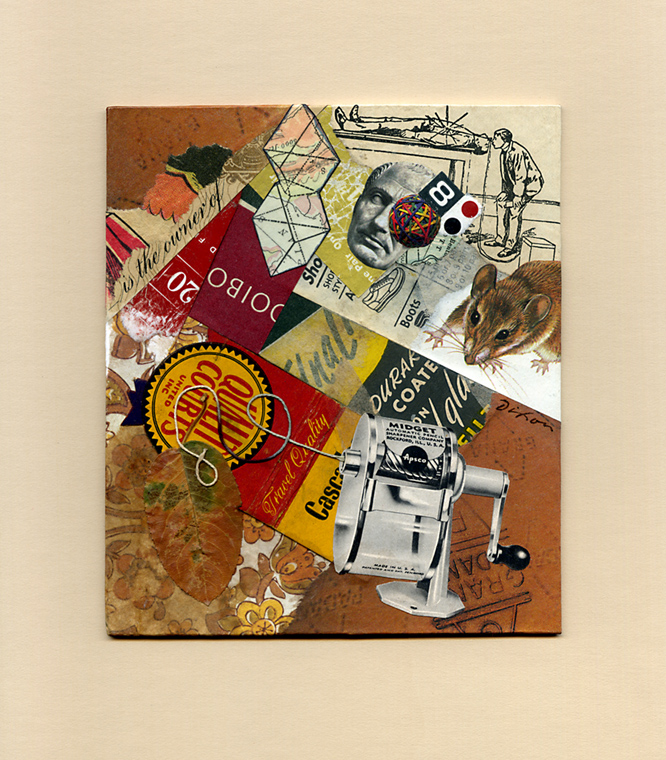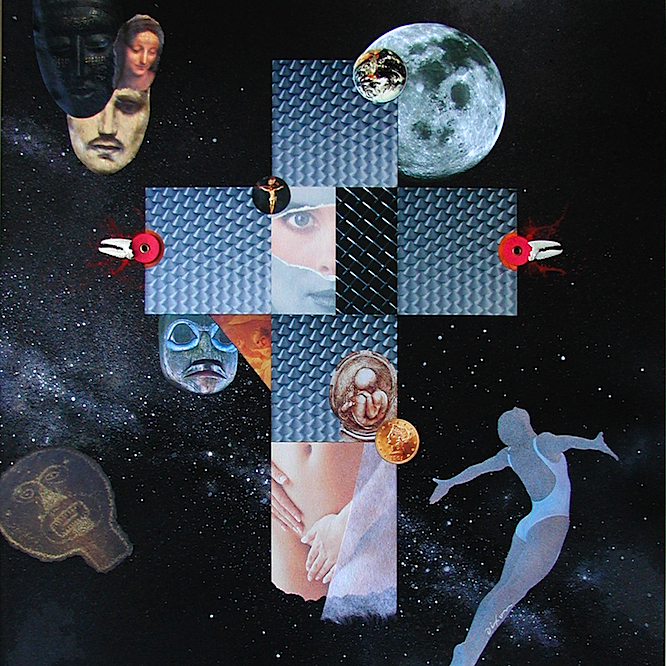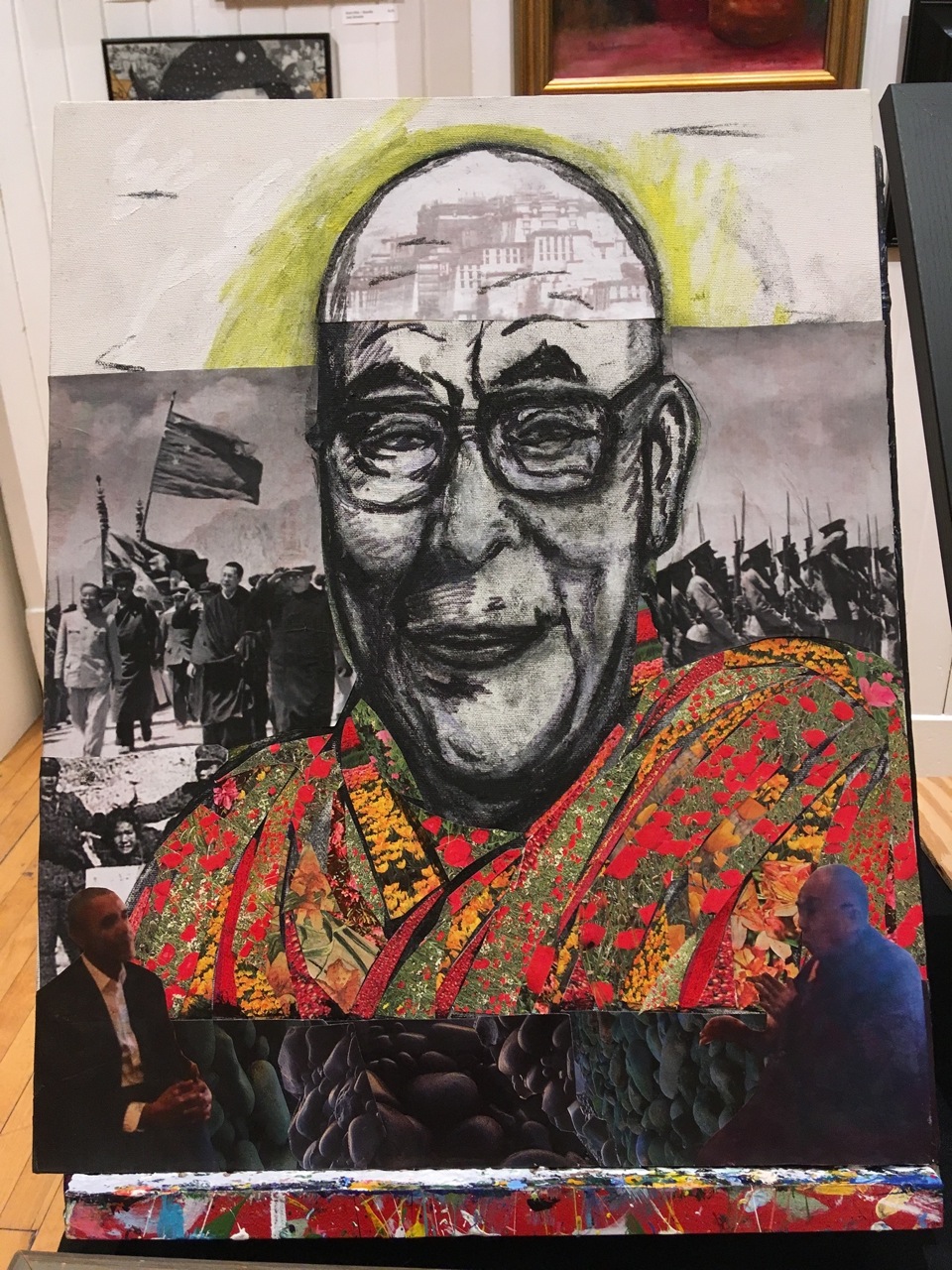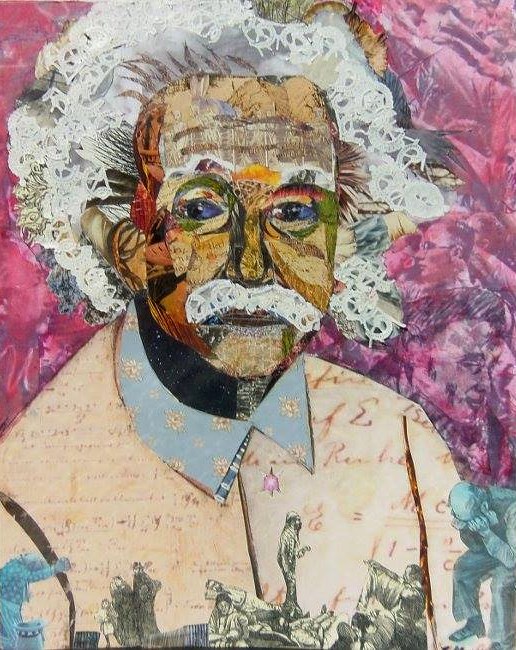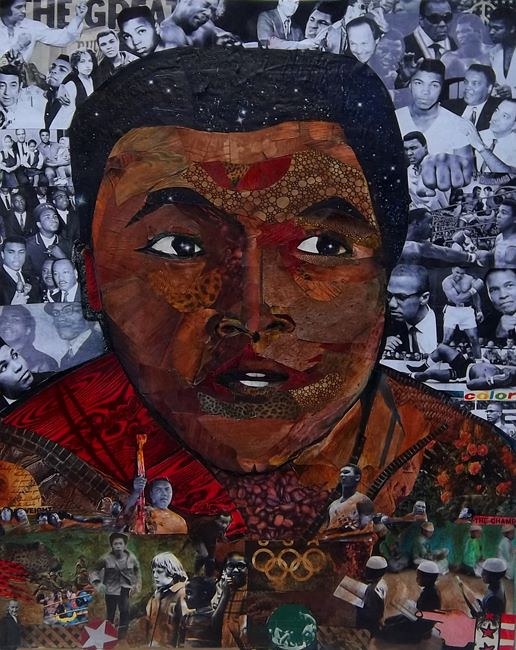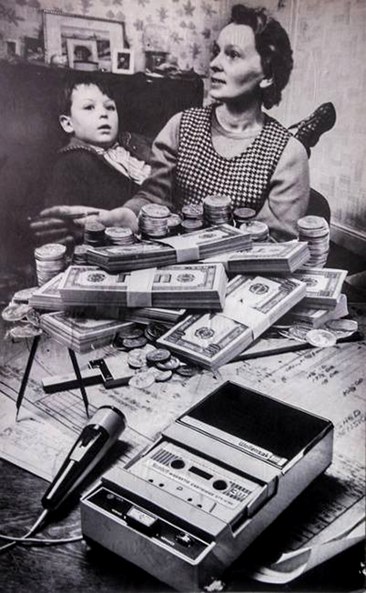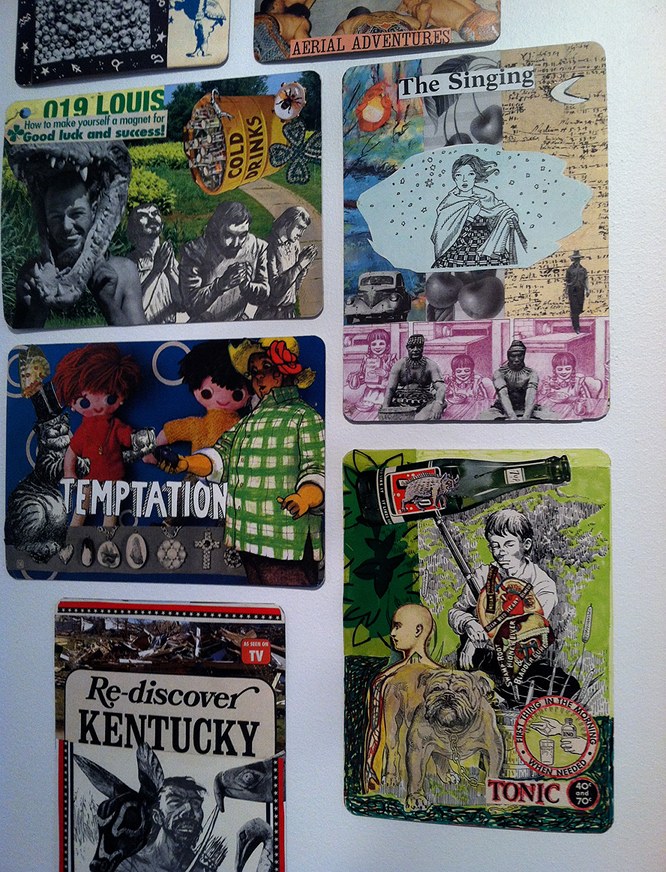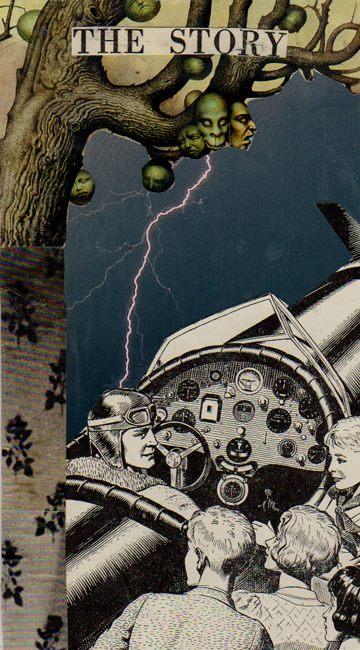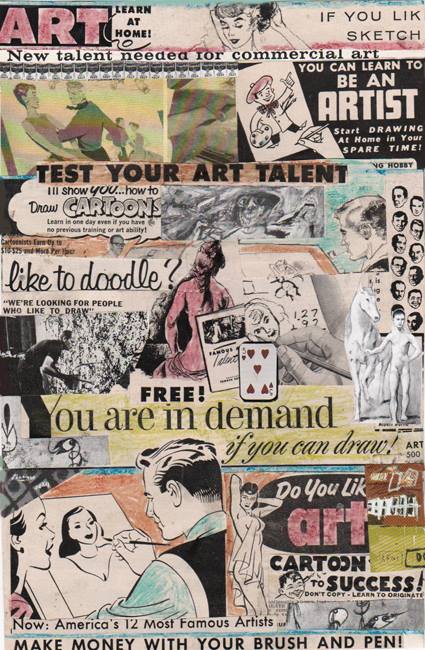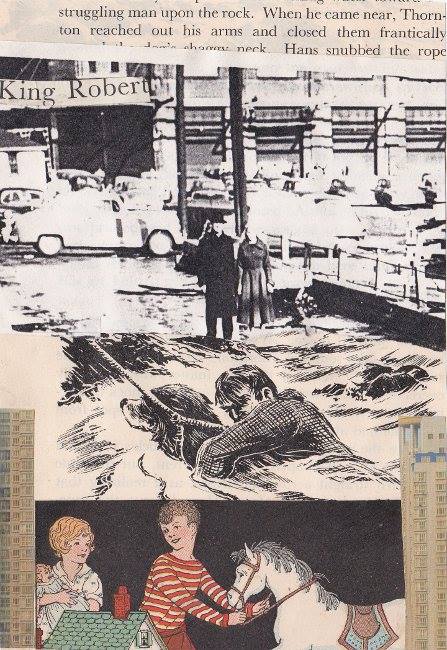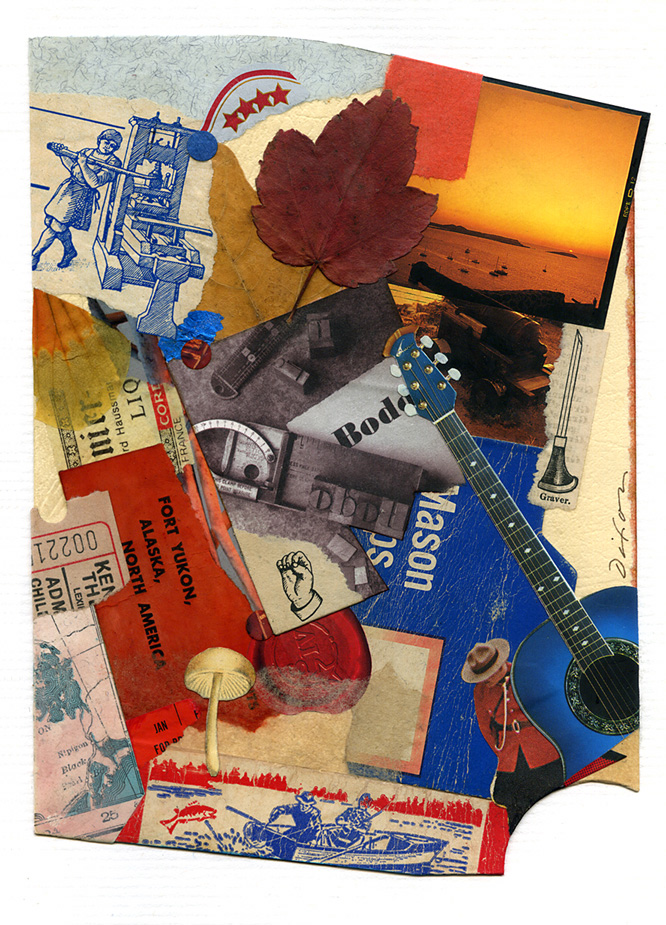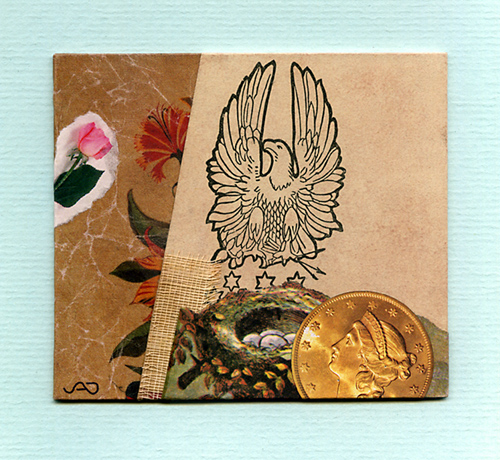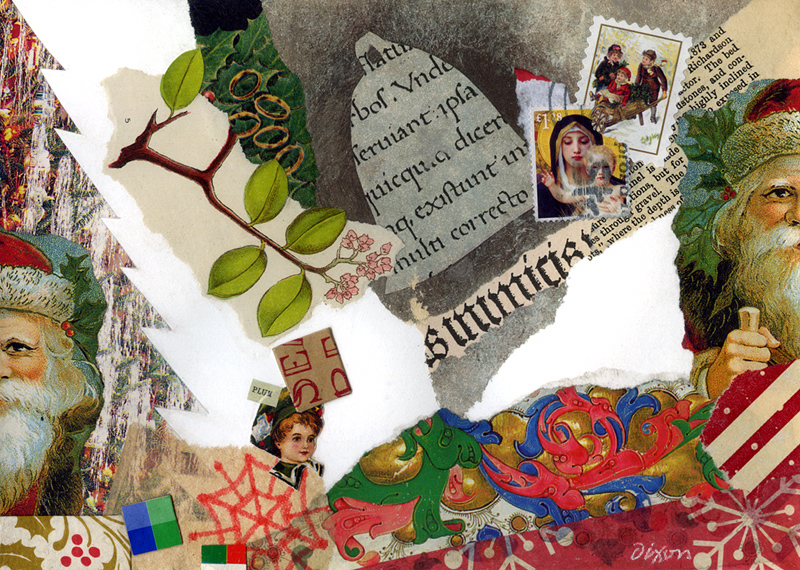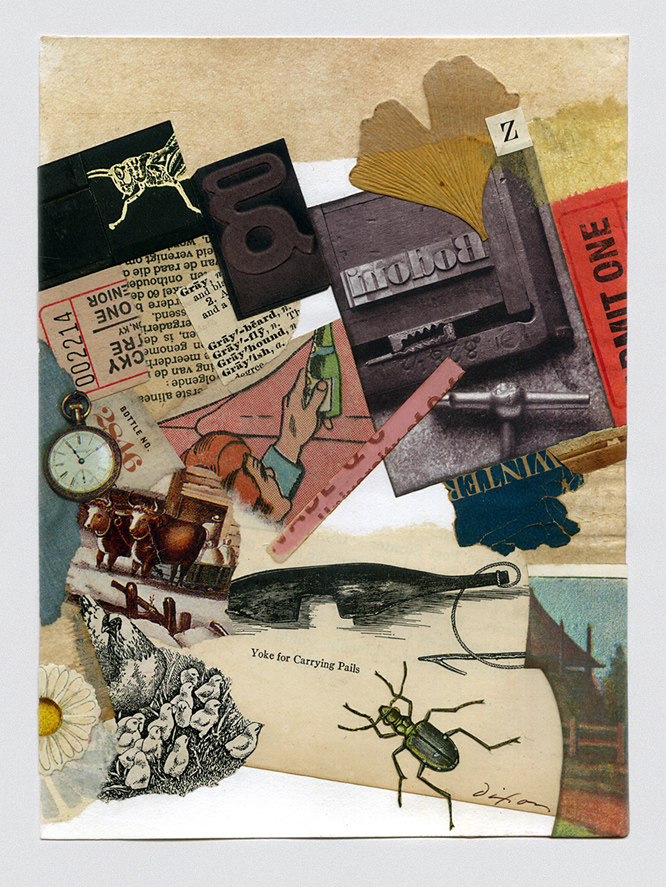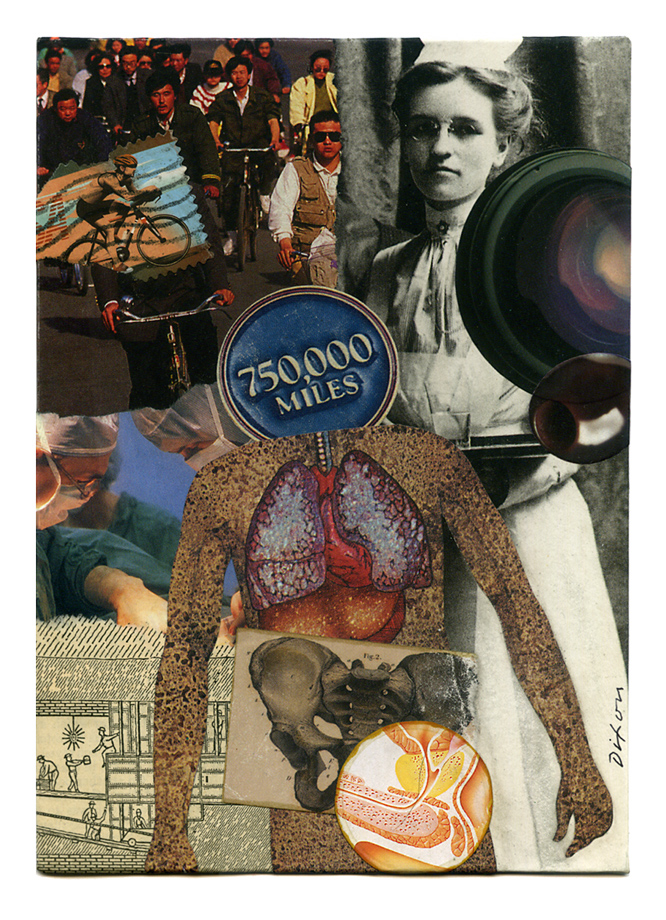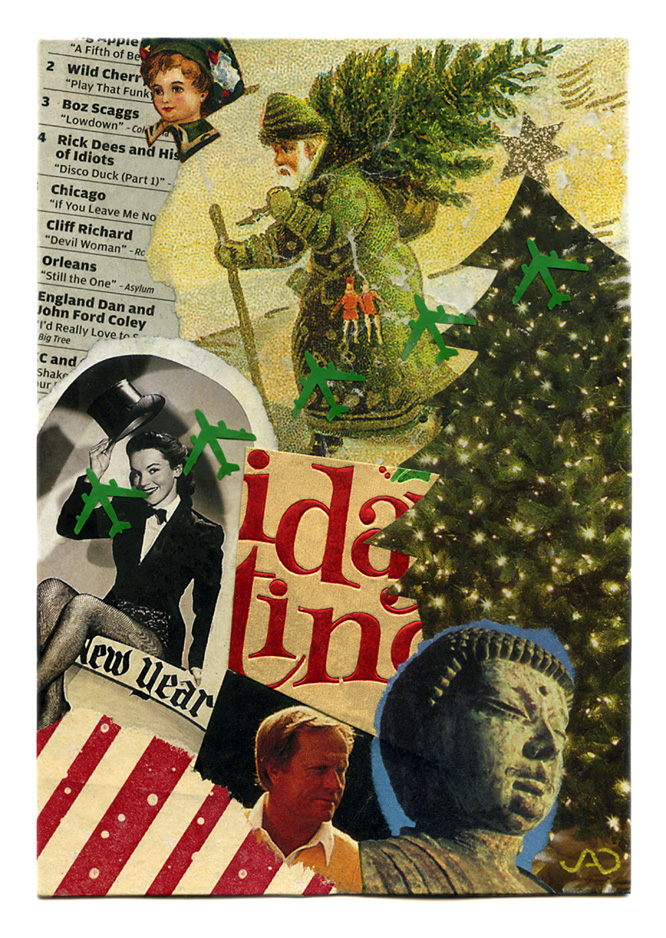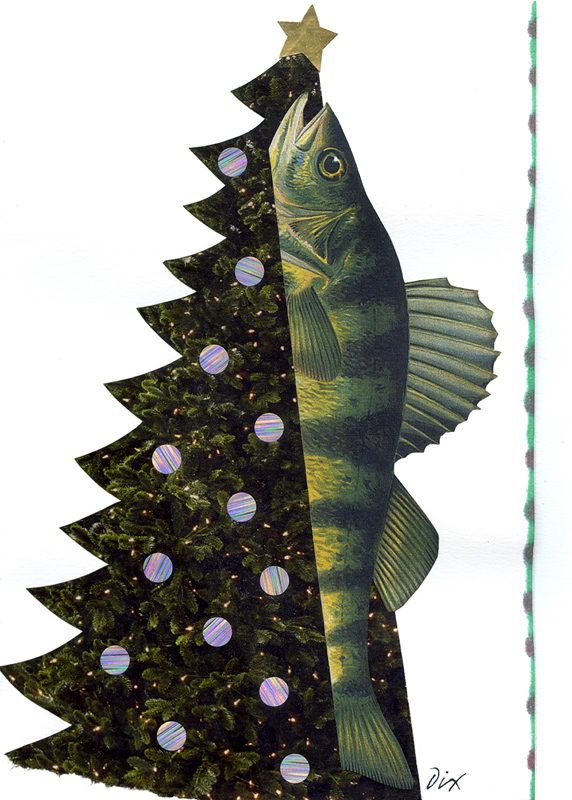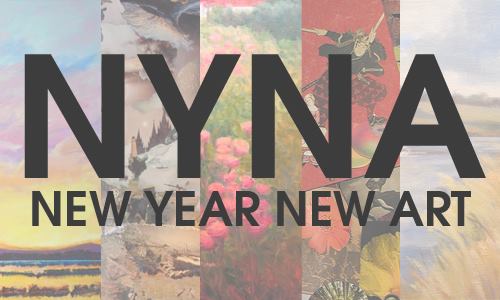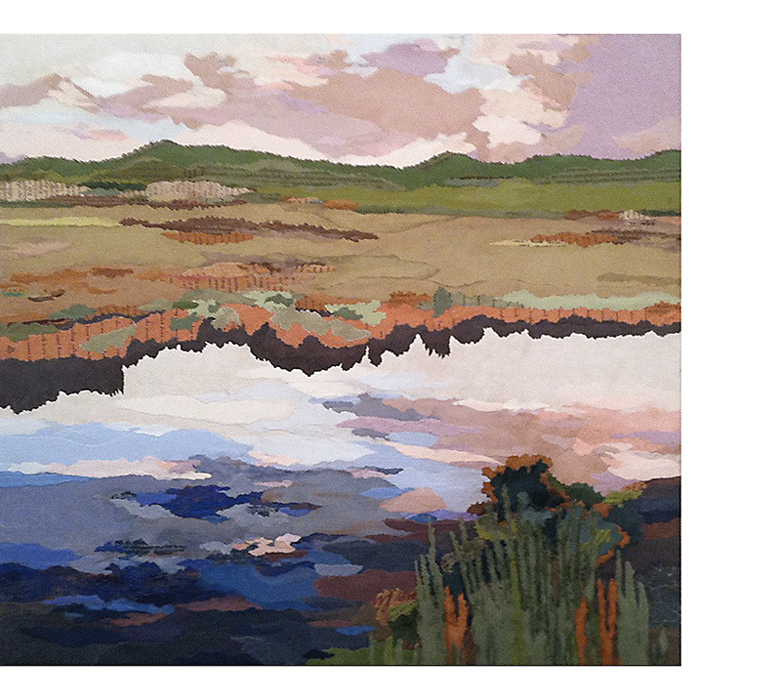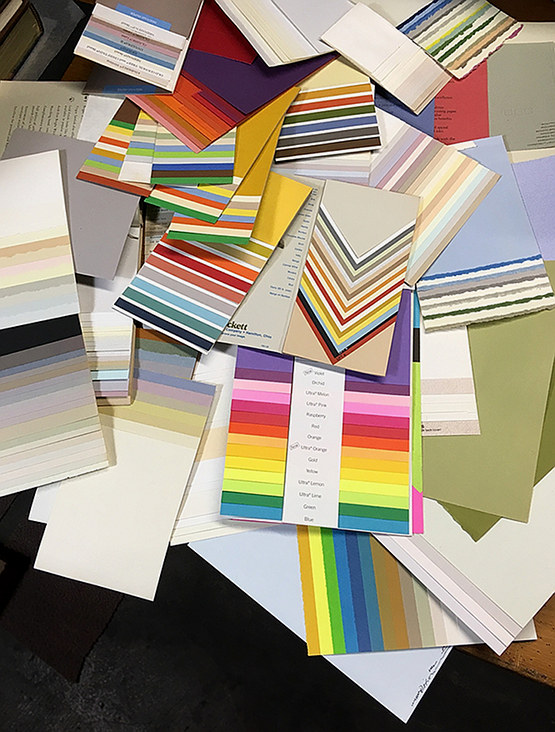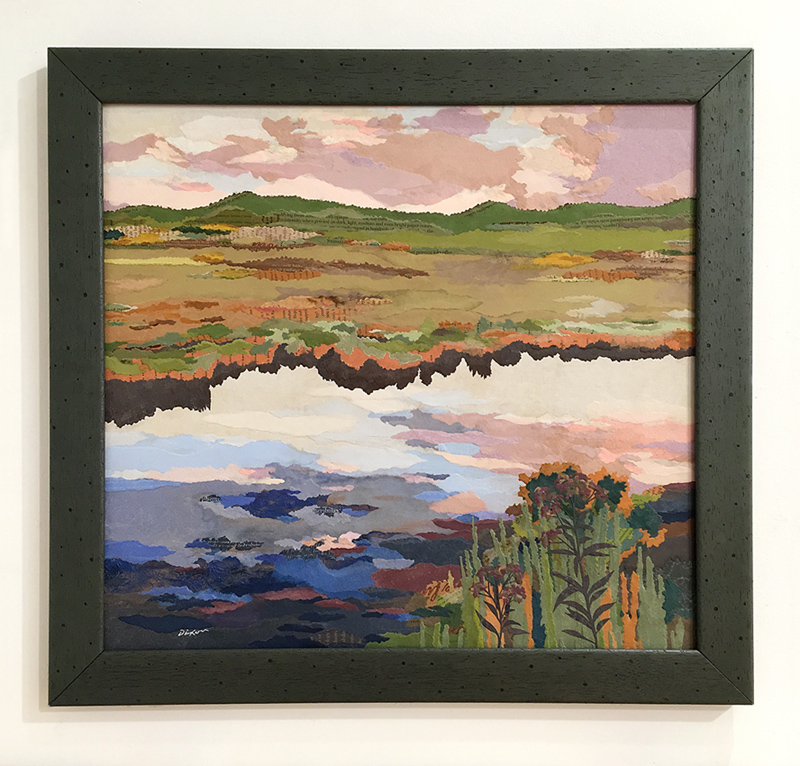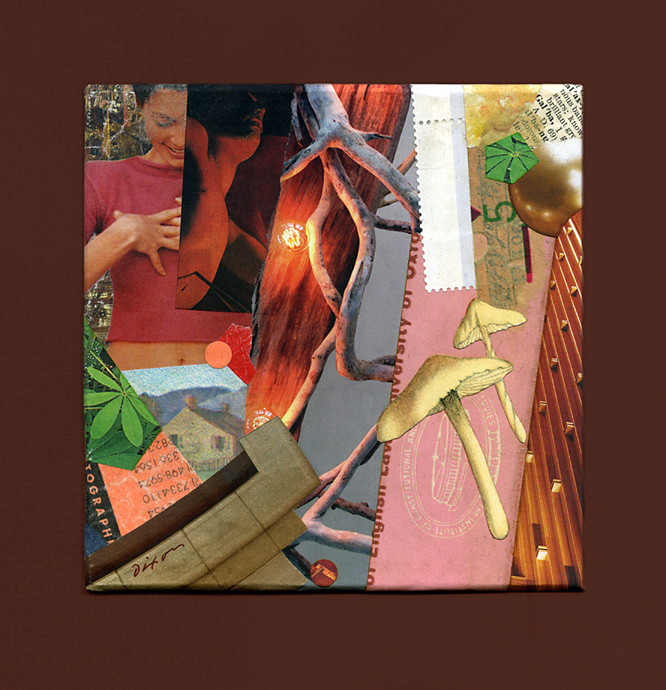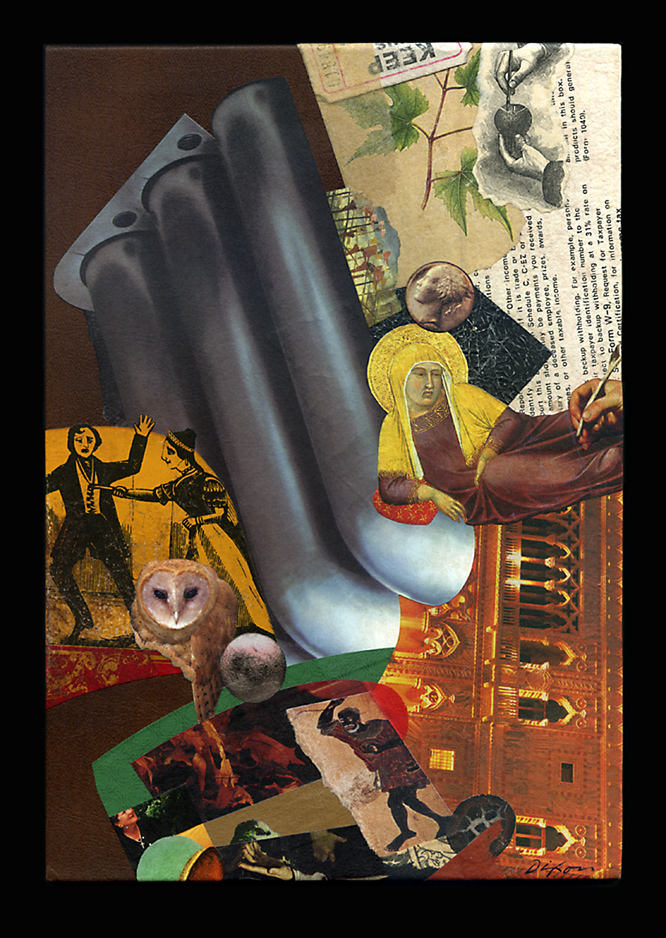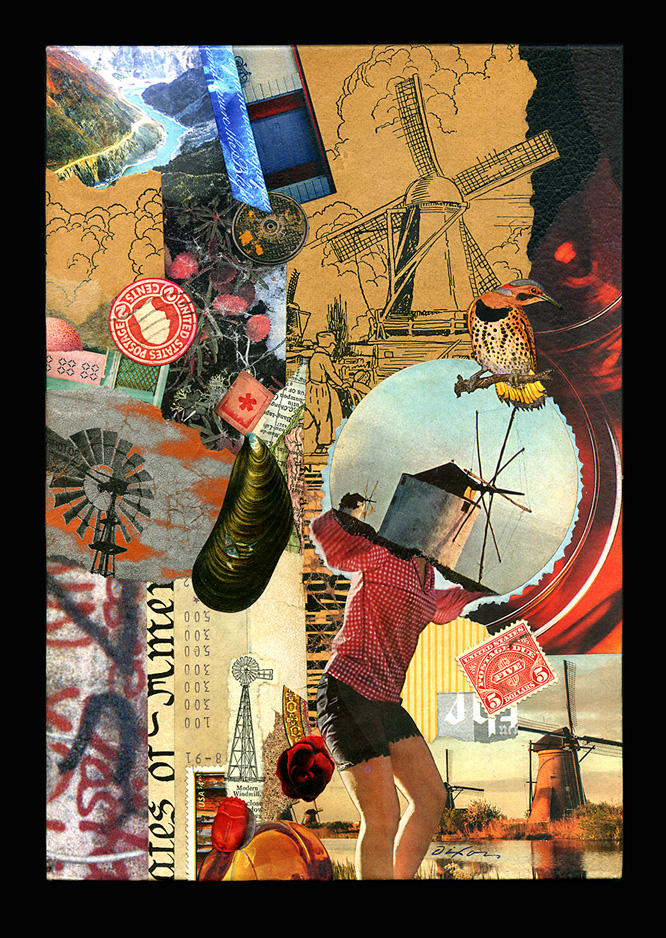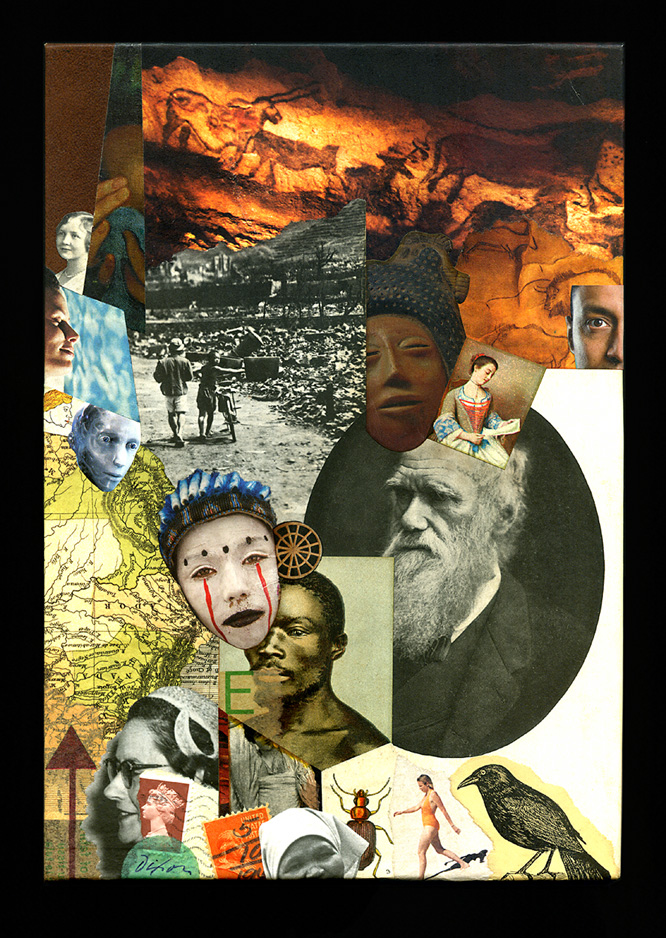“What more can we ask than to never know what to expect?”
— Paul Violi
The opening reception for the annual New Year New Art exhibition at our Community Arts Center was a massive success. Collage artist Connie Beale had a superb artwork on display, but she managed to slip out before we could include her in a group picture. So, we asked the ever-helpful Kate Snyder to grab a shot of “three collage dudes,” back in the corner where Robert Hugh Hunt was showing a new addition to his “20th Century Icons” series — President Jimmy Carter. I was delighted to see included within the mixed-media portrait a collection of Jimmy heads that I’d surrendered to Robert earlier in the year. 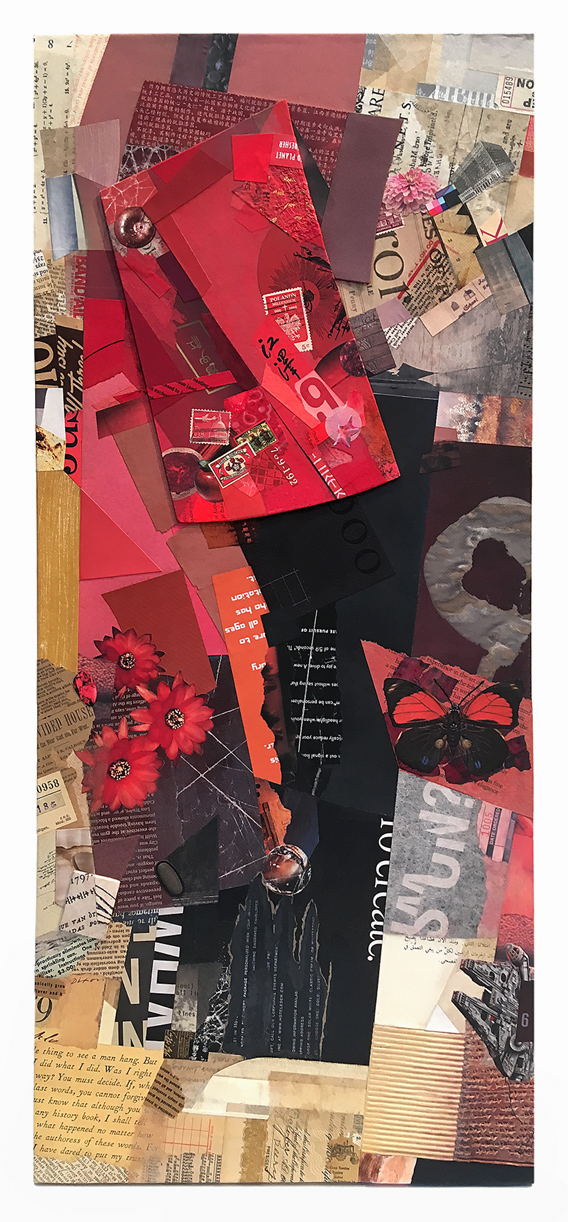 Strangely enough, the envelope had been lurking in my stash for decades, after the faces were clipped from newspapers during the Carter presidency. It can take a while for certain elements to find their destination, on the uncanny path toward a collage outcome.
Strangely enough, the envelope had been lurking in my stash for decades, after the faces were clipped from newspapers during the Carter presidency. It can take a while for certain elements to find their destination, on the uncanny path toward a collage outcome.
My Harmonic Squall was hanging nearby. As these things often play out, I was a bit more pleased with the piece each time I saw it. The residual sense of heightened criticism was continuing to wear off. One certainly doesn’t want the effect to move in an opposite progression. It makes me think of the companion artwork that just as easily could have been part of the exhibition — an extreme vertical that I called Strategic Quake. Both were the result of an evolved process that I touched on in last week’s entry. I’ve been meaning to post the one that wasn’t selected, too (above), along with an image detail (below, for a zoomed-in look). “Spatial manipulation, a unified color scheme, and compositional balance” might be a good way to describe the goals I’ve set for a collage abstraction. It needs to look strong from a distance, with the ingredients becoming the “brushstrokes” that provide visual interest at a closer viewing distance.
Strategic Quake (detail)
collage on fabric by J A Dixon
12.5 x 28.25 inches
available for purchase
